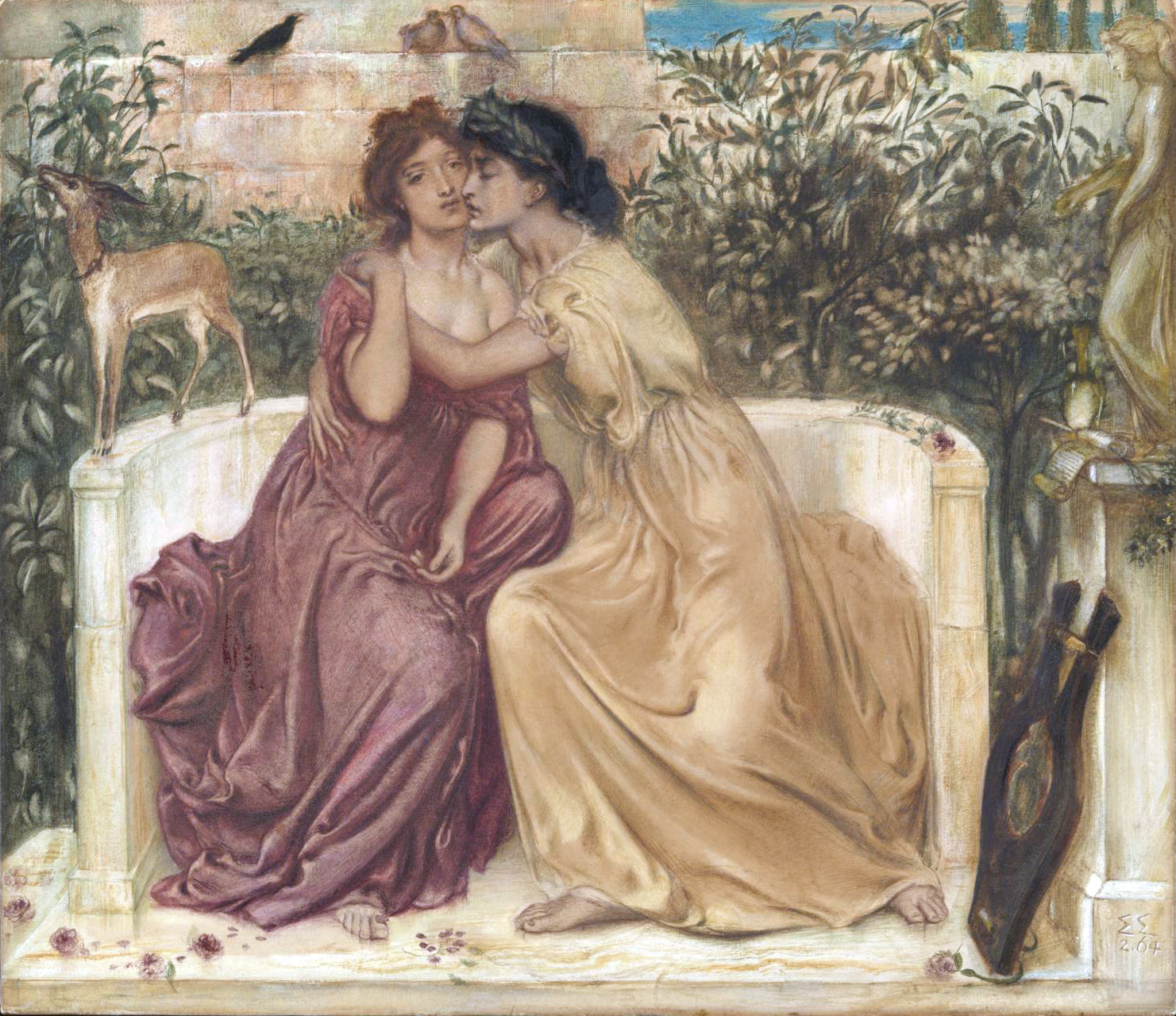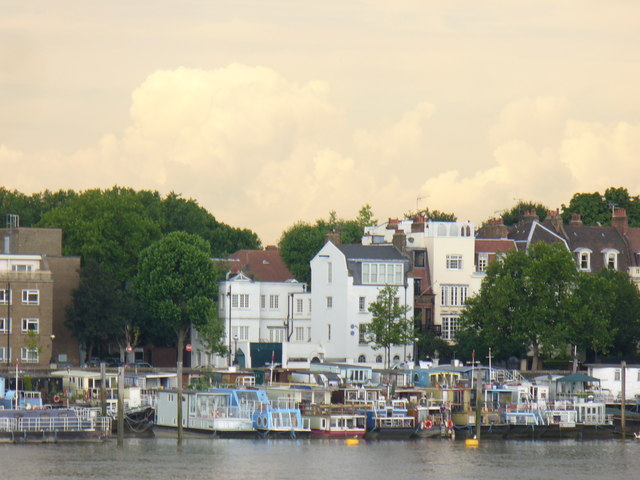|
Anthony Frederick Augustus Sandys
Anthony Frederick Augustus Sandys (born Antonio Frederic Augustus Sands; 1 May 1829 – 25 June 1904), usually known as Frederick Sandys, was a British painter, illustrator, and draughtsman, associated with the Pre-Raphaelites. He was also associated with the Norwich School of painters. Biography Artistic studies Frederick Sandys was born in Norwich, England, Norwich,Antonio Fredric Augustus Sands in "Parish registers for St. Stephen's Church, Norwich", ''FamilySearch'' Antonio Fredric Augustus Sands. and received his earliest lessons in art from his father, Anthony Sands, who was himself a painter. His early studies show that he had a natural gift for careful and beautiful drawing. He was educated at Norwich School and later attended the Norwich School of Art & Design, Norwich School of Design in 1846. In the same and next year his talent was recognized by the Royal Society of Arts. Personal relationships Sandys married Georgiana Creed, but this marriage only lasted three year ... [...More Info...] [...Related Items...] OR: [Wikipedia] [Google] [Baidu] |
Anthony Sand
Anthony Sands (1806–1883) was a British painter. He was the father of artist Frederick Sandys. Anthony was originally a dyer by profession, became a drawing-master in Norwich and subsequently a portrait and subject painter; examples of his work were in the Norwich Museum (No. 50) and in Mr. Russell Colman's collection at Norwich. He died in 1883. References ;Specific ;General External links * {{DEFAULTSORT:Sands, Anthony 1806 births 1883 deaths 19th-century British painters British male painters People from Norwich ... [...More Info...] [...Related Items...] OR: [Wikipedia] [Google] [Baidu] |
Simeon Solomon
Simeon Solomon (9 October 1840 – 14 August 1905) was a British painter associated with the Pre-Raphaelites who was noted for his depictions of Jewish life and same-sex desire. His career was cut short as a result of public scandal following his arrests and convictions for attempted sodomy in 1873 and 1874. Biography Solomon was born into a prominent Jewish family. He was the eighth and last child born to merchant Michael (Meyer) Solomon and artist Catherine (Kate) Levy. Solomon was a younger brother to fellow painters Abraham Solomon (1824–1862) and Rebecca Solomon (1832–1886). Born and educated in London, Solomon started receiving lessons in painting from his older brother around 1850. He started attending Carey's Art Academy in 1852. His older sister first exhibited her works at the Royal Academy during the same year. As a student at the Royal Academy Schools, Solomon was introduced through Dante Gabriel Rossetti to other members of the Pre-Raphaelite circle, as ... [...More Info...] [...Related Items...] OR: [Wikipedia] [Google] [Baidu] |
Good Words
''Good Words'' was a 19th-century monthly periodical established in Scotland Scotland is a Countries of the United Kingdom, country that is part of the United Kingdom. It contains nearly one-third of the United Kingdom's land area, consisting of the northern part of the island of Great Britain and more than 790 adjac ... in 1860 by the Scottish publisher Alexander Strahan. Its first editor was Norman Macleod. After his death in 1872, it was edited by his brother, Donald Macleod, though there is some evidence that the publishing was taken over at that time by W. Isbister & Co. Intended readership and content ''Good Words'' was directed at evangelicals and nonconformists, particularly of the lower middle classes. It included overtly religious material, but also fiction and non-fiction articles on general subjects, including science. The standard for content was that the devout should be able to read it on Sundays without sin. It became known as a "fireside read", which co ... [...More Info...] [...Related Items...] OR: [Wikipedia] [Google] [Baidu] |
Cornhill Magazine
''The Cornhill Magazine'' (1860–1975) was a monthly Victorian literature, Victorian magazine and literary journal named after the street address of the founding publisher Smith, Elder & Co. at 65 Cornhill, London, Cornhill in London.Laurel Brake and Marysa Demoor, ''Dictionary of Nineteenth-Century Journalism in Great Britain and Ireland''. Ghent: Academia Press and London: British Library, 2009. (p. 145). In the 1860s, under the editorship of William Makepeace Thackeray, the paper's large circulation peaked around 110,000. Due to emerging competitors, circulation fell to 20,000 by 1870. The following year, Leslie Stephen took over as editor. When Stephen left in 1882, circulation had further fallen to 12,000. ''The Cornhill'' was purchased by John Murray (publishing house), John Murray in 1912, and continued to publish issues until 1975. History ''The Cornhill'' was founded by George Murray Smith in 1859, and the first issue displayed the cover date January 1860. A literar ... [...More Info...] [...Related Items...] OR: [Wikipedia] [Google] [Baidu] |
Great Yarmouth And Breydon Water (1871, Frederick Sandys)
Great may refer to: Descriptions or measurements * Great, a relative measurement in physical space, see Size * Greatness, being divine, majestic, superior, majestic, or transcendent People * List of people known as "the Great" * Artel Great (born 1981), American actor * Great Osobor (born 2002), Spanish-born British basketball player Other uses * ''Great'' (1975 film), a British animated short about Isambard Kingdom Brunel * ''Great'' (2013 film), a German short film * Great (supermarket), a supermarket in Hong Kong * GReAT, Graph Rewriting and Transformation, a Model Transformation Language * Gang Resistance Education and Training Gang Resistance Education And Training, abbreviated G.R.E.A.T., provides a school-based, police officer-instructed program in America that includes classroom instruction and a variety of learning activities. The program was originally adminis ..., or GREAT, a school-based and police officer-instructed program * Global Research and Analysis Te ... [...More Info...] [...Related Items...] OR: [Wikipedia] [Google] [Baidu] |
Chelsea, London
Chelsea is an area in West London, England, due south-west of Kilometre zero#Great Britain, Charing Cross by approximately . It lies on the north bank of the River Thames and for postal purposes is part of the SW postcode area, south-western postal area. Chelsea historically formed a manor and parish in the Ossulstone hundred of Middlesex, which became the Metropolitan Borough of Chelsea in 1900. It merged with the Metropolitan Borough of Kensington, forming the Royal Borough of Kensington and Chelsea upon the creation of Greater London in 1965. The exclusivity of Chelsea as a result of its high property prices historically resulted in the coining of the term "Sloane Ranger" in the 1970s to describe some of its residents, and some of those of nearby areas. Chelsea is home to one of the largest communities of Americans living outside the United States, with 6.53% of Chelsea residents having been born in the U.S. History Early history The word ''Chelsea'' (also formerly ' ... [...More Info...] [...Related Items...] OR: [Wikipedia] [Google] [Baidu] |
Cheyne Walk
Cheyne Walk is a historic road in Chelsea, London, England, in the Royal Borough of Kensington and Chelsea. It runs parallel with the River Thames. Before the construction of Chelsea Embankment reduced the width of the Thames here, it fronted the river along its whole length. Location At its western end, Cheyne Walk meets Cremorne Road end-on at the junction with Lots Road. The Walk runs alongside the River Thames until Battersea Bridge where, for a short distance, it is replaced by Chelsea Embankment with part of its former alignment being occupied by Ropers Gardens. East of Old Church Street and Chelsea Old Church, the Walk runs along the north side of Albert Bridge Gardens and Chelsea Embankment Gardens parallel with Chelsea Embankment. At the north end of Albert Bridge, the Walk merges with Chelsea Embankment. The Walk ends at Royal Hospital Road. At the western end between Lots Road and Battersea Bridge is a collection of residential houseboats that have been ''in sit ... [...More Info...] [...Related Items...] OR: [Wikipedia] [Google] [Baidu] |
William Holman Hunt
William Holman Hunt (2 April 1827 – 7 September 1910) was an English painter and one of the founders of the Pre-Raphaelite Brotherhood. His paintings were notable for their great attention to detail, vivid colour, and elaborate symbolism. These features were influenced by the writings of John Ruskin and Thomas Carlyle, according to whom the world itself should be read as a system of visual signs. For Hunt it was the duty of the artist to reveal the correspondence between sign and fact. Of all the members of the Pre-Raphaelite Brotherhood, Hunt remained most true to their ideals throughout his career. He was always keen to maximise the popular appeal and public visibility of his works. Biography Born at Cheapside, City of London, as William Hobman Hunt, to warehouse manager William Hunt (1800–1856) and Sarah (–1884), daughter of William Hobman, of Rotherhithe Hunt adopted the name "Holman" instead of "Hobman" when he discovered that a clerk had misspelled the name ... [...More Info...] [...Related Items...] OR: [Wikipedia] [Google] [Baidu] |
John Ruskin
John Ruskin (8 February 1819 20 January 1900) was an English polymath a writer, lecturer, art historian, art critic, draughtsman and philanthropist of the Victorian era. He wrote on subjects as varied as art, architecture, Critique of political economy, political economy, education, museology, geology, botany, ornithology, literature, history, and myth. Ruskin's writing styles and literary forms were equally varied. He wrote essays and treatises, poetry and lectures, travel guides and manuals, letters and even The King of the Golden River, a fairy tale. He also made detailed sketches and paintings of rocks, plants, birds, landscapes, architectural structures and ornamentation. The elaborate style that characterised his earliest writing on art gave way in time to plainer language designed to communicate his ideas more effectively. In all of his writing, he emphasised the connections between nature, art and society. Ruskin was hugely influential in the latter half of the 19th c ... [...More Info...] [...Related Items...] OR: [Wikipedia] [Google] [Baidu] |
John Everett Millais
Sir John Everett Millais, 1st Baronet ( , ; 8 June 1829 – 13 August 1896) was an English painter and illustrator who was one of the founders of the Pre-Raphaelite Brotherhood. He was a child prodigy who, aged eleven, became the youngest student to enter the Royal Academy Schools. The Pre-Raphaelite Brotherhood was founded at his family home in London, at 83 Gower Street (now number 7). Millais became the most famous exponent of the style, his painting '' Christ in the House of His Parents'' (1849–50) generating considerable controversy, and he produced a picture that could serve as the embodiment of the historical and naturalist focus of the group, ''Ophelia'', in 1851–52. By the mid-1850s, Millais was moving away from the Pre-Raphaelite style to develop a new form of realism in his art. His later works were enormously successful, making Millais one of the wealthiest artists of his day, but some former admirers including William Morris saw this as a sell-out (Millais n ... [...More Info...] [...Related Items...] OR: [Wikipedia] [Google] [Baidu] |
The Nightmare - Frederick Sandys
''The'' is a grammatical article in English, denoting nouns that are already or about to be mentioned, under discussion, implied or otherwise presumed familiar to listeners, readers, or speakers. It is the definite article in English. ''The'' is the most frequently used word in the English language; studies and analyses of texts have found it to account for seven percent of all printed English-language words. It is derived from gendered articles in Old English which combined in Middle English and now has a single form used with nouns of any gender. The word can be used with both singular and plural nouns, and with a noun that starts with any letter. This is different from many other languages, which have different forms of the definite article for different genders or numbers. Pronunciation In most dialects, "the" is pronounced as (with the voiced dental fricative followed by a schwa) when followed by a consonant sound, and as (homophone of the archaic pronoun ''thee' ... [...More Info...] [...Related Items...] OR: [Wikipedia] [Google] [Baidu] |






